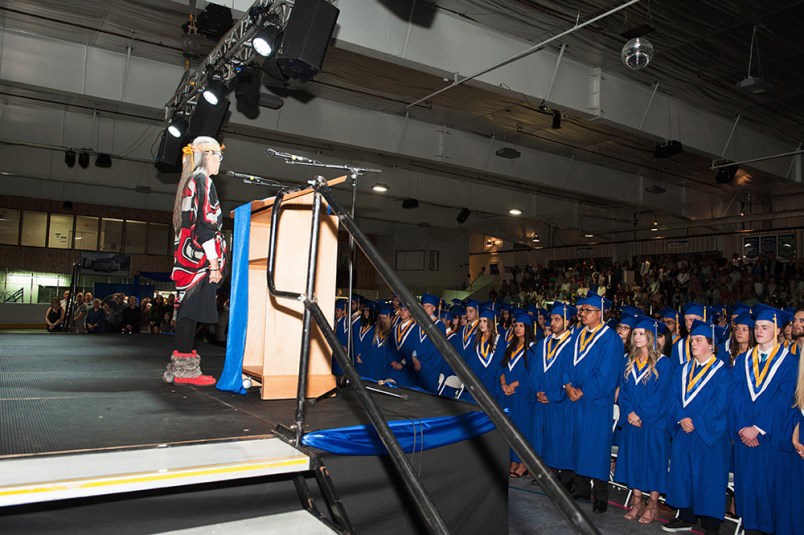At first glance, the 2017-2018 graduation rate reads 100 per cent.
The B.C. ministry of education, which released the latest graduation rates for the district, bases its numbers on a six-year completion, rather than a Grade 8 to 12 education.
“It captures more kids than are actually in the graduating year. You might have 100 kids who graduated last year, but that actually included all of those kids from the year before who didn’t graduate,” SD48 assistant superintendent Chris Nicholson said.
“Some students do need to learn in different ways and at different rates. Some kids take longer to graduate.”
The way the data is represented, he continued, is somewhat problematic. If there are 52 First Nations students in one year and fewer the next, there will be a bigger impact on the percentage even if the same number of students don’t graduate.
Instead, Nicholson said to look at the overall trend.
“More kids are graduating, more kids of Aboriginal descent are graduating, more kids with special needs are graduating. This does not include kids with special needs who are on individualize programs where they’re doing what’s called modified curriculum,” he said, adding that it also doesn’t count students in the international programs.
Students with special needs saw the biggest increase of graduation rates last school year, jumping from just over 60 per cent in 2013-2014 to nearly 100 per cent in 2017-2018.
Nicholson said this trend is because of the district’s focus on the learner.
“We value … looking at the individual and then looking at all the pieces that go into supporting that person as a human being,” he said. “We’re a very inclusive district. We don’t segregate our students. We try to support kids where they’re at in the classroom.”
The assistant superintendent also credited the district’s First Nations partners with helping increase graduation numbers.
“Parents and committee members know their kids best, and we need to listen to what they have to say and what they say helps inform our efforts,” Nicholson said.




